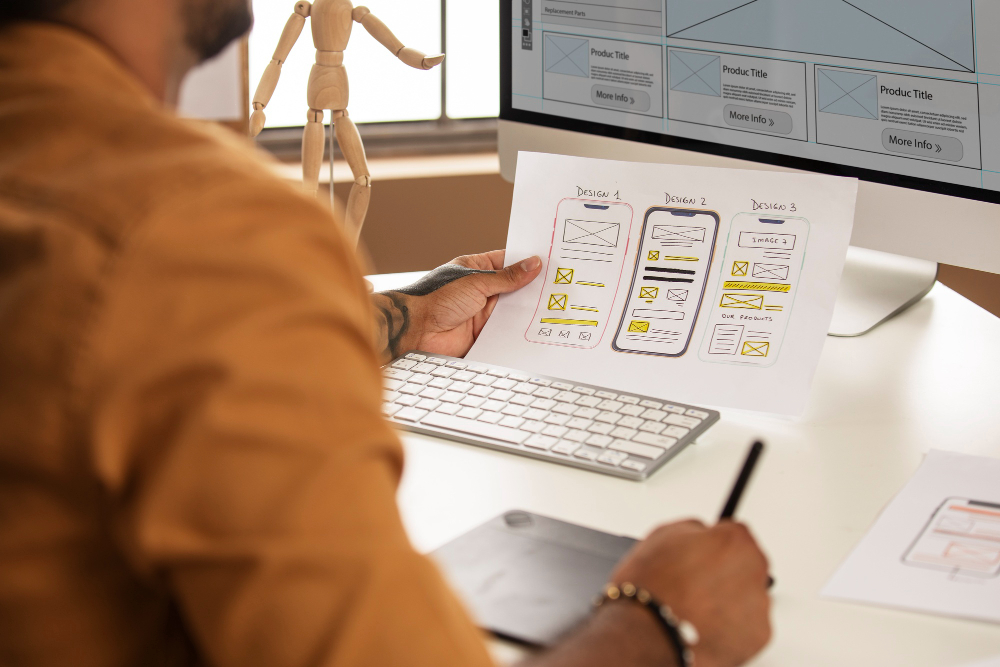In today’s fast-paced digital world, the importance of intuitive UI/UX design and innovative web development has never been greater. As technology continues to evolve and user expectations rise, businesses must stay ahead of the curve to remain competitive and deliver standout digital experiences. Let’s explore some of the key trends shaping the future of user interface design and web development.
UI/UX Design Trends
1. Minimalist Design with Impact
Simplicity remains a powerful principle in modern design. Clean layouts, ample white space, and bold typography make websites both visually appealing and easy to navigate. A minimalist approach helps focus user attention on core content and calls-to-action, creating a streamlined and intuitive experience.
2. Voice Activated Interfaces
Voice interaction is becoming a standard feature across websites and applications, particularly as users grow accustomed to smart assistants and hands-free browsing. Integrating voice-enabled features enhances accessibility and user convenience, especially on mobile devices.
3. Dark Mode and Accessibility
Dark mode has become a popular choice for users seeking a sleek look and reduced eye strain. At the same time, accessible design is now a necessity. Ensuring that digital experiences are usable by everyone—including individuals with visual or motor impairments—has become a central goal of modern UI/UX practices.
4. Micro-Interactions for User Engagement
Small animations, hover effects, and other micro-interactions can significantly enhance user engagement. These subtle yet meaningful design elements provide feedback, guide users, and add a dynamic touch to the interface without overwhelming the user experience.
5. Augmented Reality (AR) Integration
AR is transforming how users interact with digital content. From virtual try-ons to interactive product previews, AR creates immersive experiences that bridge the gap between digital and physical worlds—offering brands a creative way to engage users.
Web Development Trends
1. Progressive Web Apps (PWAs)
PWAs offer the speed and functionality of native apps while being accessible via web browsers. They load quickly, function offline, and provide a seamless experience across devices, making them a powerful solution for businesses focused on performance and reach.
2. Voice Search Optimization
With voice search on the rise, optimizing content for spoken queries is becoming essential. This involves the use of natural language processing (NLP), conversational content, and long-tail keywords that mirror how people naturally speak and ask questions.
3. Inclusive Web Development Practices
Creating inclusive, accessible websites is more than a trend—it’s a standard. Developers are implementing features like proper color contrast, keyboard navigation, screen reader compatibility, and ARIA roles to ensure all users can access and interact with web content effectively.
4. The Evolution of E-commerce
E-commerce continues to evolve rapidly, driven by personalization, AI, and data analytics. Online stores are shifting toward offering tailored experiences, using customer data to recommend products, optimize the shopping journey, and foster brand loyalty.
Why These Trends Matter
In a world where user expectations are constantly evolving, staying up to date with the latest UI/UX design and web development trends is essential. Businesses that invest in enhancing user experiences will see benefits in engagement, accessibility, and long-term growth. Adopting these innovations helps create seamless, inclusive, and future-ready digital platforms that truly connect with users.
Conclusion
As digital ecosystems grow more complex and user expectations continue to evolve, businesses must adapt by embracing forward-thinking design and development strategies. From minimalistic aesthetics and voice-enabled interfaces to inclusive practices and immersive technologies like AR, these trends are not just about keeping up—they’re about standing out.
By incorporating these UI/UX and web development innovations, organizations can deliver seamless, engaging, and accessible experiences that resonate with users and build lasting connections. The future of digital design isn’t just about looking good—it’s about creating value at every interaction.


 Image credit: Freepik
Image credit: Freepik


